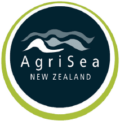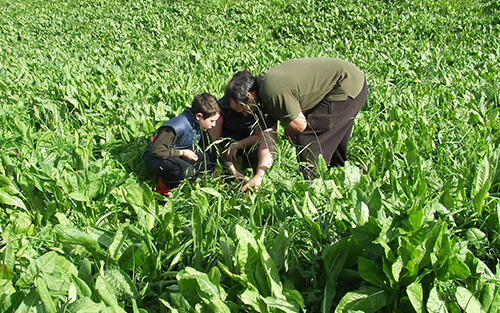SMITH DAIRY FARM – A260HA ATIAMURI
Everything Miah and Jenny had learnt in the past about soil and pasture has been turned upside down.
LOCATION: Atiamuri
AREA: 260ha effective
COWS: 535 Jersey crossbreeds
PRODUCTION: 2018/19 target: 200,000-210,000kg milk solids
FARM DAIRY: 74-bail rotary, ACR, Protrack, auto teat sprayer, in-dairy feeding
PASTURE HARVESTED: 10t DM/ha
SUPPLEMENT: 400t
Their farm in Atiamuri was harvesting just 10 tonnes DM/ha and had a tendency to go dry quickly in the summer because the plant roots were short, Miah says. “We were putting on 150kg N/ ha, heaps of DAP, super phosphate, potassium – the works. But we were always chasing our tails and running out of grass. It was stressful.”
Miah attended an AgriSea workshop with Australian Dr Christine Jones and he came away completely converted. The change in thinking to looking after soil biology first and foremost was like a light coming on, Miah says. “It’s about starting with the soil first, not your cows first. It’s how to feed soil biology.”
The 3 Year Test
Three paired sites were chosen that were comparable in contour, aspect and fertiliser history, and each site was split into conventional fertiliser and AgriSea biostimulant programmes.
The biostimulant paddocks had three applications of AgriSea Liquid Soil and Pasture Nutrition per year while the conventional paddocks had capital and maintenance fertiliser of nitrogen, phosphorus, potassium, sulphur, magnesium and calcium.
The scepticism from other farmers has been continuous, but people can now see the results of how well the paddocks are performing under the programme. Everything Miah and Jenny had learnt in the past has been turned upside down, but if they can make money and look after the environment at the same time it’s a win-win, the couple say. “We are trying to look after the land, that is what looks after us.” Jenny says. “I thought I was doing a good job of looking after the environment, but by doing this we wont have any (fertiliser) runoff and it takes the pressure off. Change is coming whether we like it or not and we feel we are ahead of the game.”
“We really wanted to test it. There was no gap in pasture production after three years, and the AgriSea paddocks came in at half the cost. There is more available N in our AgriSea paddocks, where clover is actually fixing nitrogen, than the paddocks that had N fertiliser put on.”
A New Approach
Miah and Jenny still cop some flack for going down a different path, but the couple can see the results and they want to act now before they are made to by new regulations. “Most people won’t change unless they’re made to change. Most people will wait and come back in another three years and see how we are going. A lot of people said our soil will be depleted after 3 years, well it’s not. This farm had no topsoil, it had been bulldozed off. You can see it changing in the paddocks. The roots were only going down two inches, now they’re growing up to a metre.” Miah and Jenny are taking a step further over the next two seasons and are trialling regenerative grazing and multi-pasture species.
This case study is summarized from the article “Alternative Test” which appeared in the November 2018 issue of Dairy Exporter magazine. Used with permission.

